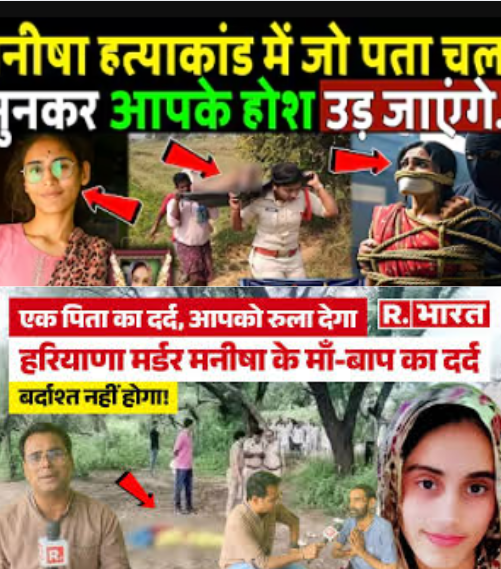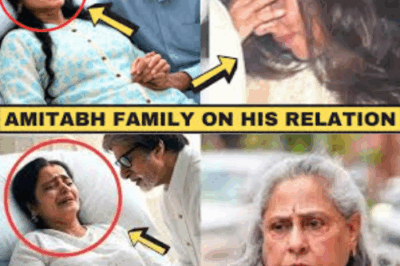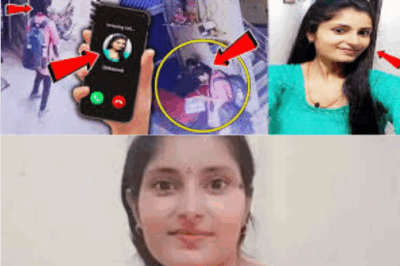What has been revealed now in the Manisha murder case will blow your mind! Bhiwani Lady Teacher Manisha Case
In recent days, the northern Indian state of Haryana has been rocked by the tragic case of Manisha, a young woman whose untimely death has stirred widespread public outrage and raised serious questions about law enforcement and social justice. This case, which unfolded in the Bhiwani district, has not only sparked intense debates about police accountability but also highlighted the vulnerability of young women in rural India. As the investigation unfolds, the community and authorities alike are grappling with conflicting narratives and mounting pressure to deliver justice.
Manisha was a 19-year-old girl from the small village of Dhani Laxman in Bhiwani. Known for her intelligence and determination, she had recently completed her 12th-grade examinations with impressive results, much to the pride of her family and neighbors. Despite financial hardships, Manisha was ambitious, aspiring to become a nurse, a profession she believed would allow her to serve her community and secure a stable future. To support her goals and her family, she had taken up a teaching job at a local play school, balancing work with her preparation for nursing entrance exams.
On August 11, 2025, Manisha left her home with plans to visit her school and college to complete admission formalities. Her father, Sanjay, advised her to return early, cautioning about the isolated paths she would have to travel. That was the last time she was seen alive. When Manisha failed to return and her phone went unanswered, her family’s concern quickly turned into desperation.
Initial attempts to find her were met with apparent indifference by local authorities. Despite filing a missing person’s report at the Loharu police station, Sanjay faced dismissive responses, with police suggesting that Manisha might have eloped. This response did little to ease the family’s worry. Villagers soon joined the search, scouring the area in hopes of finding any trace of the missing girl. The community’s increasing agitation led to protests demanding immediate police action.
The turning point came on the morning of August 13 when a local farmer discovered a body near a canal on the outskirts of the district. The body was badly beaten and in a state of decomposition. Upon being summoned to the mortuary, Sanjay identified the belongings as those of his daughter. This tragic confirmation ignited a wave of grief and fury throughout the village and beyond. The family and local residents accused the police of negligence, arguing that delayed action and poor investigation had contributed to the tragedy.

As the news spread, the Haryana government faced mounting pressure. Protests erupted not only in Bhiwani but also in neighboring districts, with political leaders and social activists joining the chorus demanding justice. In response, the government took swift administrative measures. The state suspended mobile internet and SMS services in Bhiwani and Charkhi Dadri for 48 hours to prevent the spread of rumors and misinformation on social media, a move that underscored the volatile situation.
Additionally, the government transferred the district Superintendent of Police, Manbir Singh, citing negligence, and appointed IPS officer Sumit Kumar to oversee the investigation. This marked the beginning of a more intensive and transparent inquiry, with forensic experts brought in to conduct detailed post-mortem examinations and collect crucial evidence.
Initial forensic reports presented a complex picture. While there was visible evidence of assault on Manisha’s body, some findings did not conclusively point to murder. The absence of certain physical signs and conflicting autopsy results added layers of complexity to the case. The police investigation faced accusations of both negligence and attempted cover-up, deepening public mistrust.
The narrative took a significant turn on August 18 when the third post-mortem and forensic report was made public. This report indicated that Manisha had ingested pesticide, with toxicological analysis confirming the presence of poison in her system. Furthermore, there was no evidence of sexual assault, as tests showed no presence of semen. Based on these findings, authorities suggested that Manisha may have committed suicide.
This revelation sparked widespread debate. Many found it hard to accept that a bright, ambitious young woman from a loving family would take her own life. Skeptics argued that the new findings might be part of an effort to divert attention from possible foul play or police lapses. Others questioned the integrity of the investigation and called for a more transparent process, including independent inquiries.
The case of Manisha touches upon broader social issues prevalent in rural India, particularly the challenges faced by young women seeking education and independence. Despite progress in women’s education and employment opportunities, societal pressures, safety concerns, and patriarchal norms continue to impose severe constraints. The sense of vulnerability is heightened in regions where law enforcement agencies are perceived to lack sensitivity or efficiency.

Manisha’s family’s ordeal highlights the emotional trauma inflicted on victims’ relatives when justice seems elusive. Their struggle for answers has become emblematic of a larger fight against systemic apathy and the quest for accountability. The protests that swept Haryana reflected a collective demand for the state to uphold the dignity and rights of its citizens, especially women.
The government’s response, including internet shutdowns and administrative reshuffles, points to the challenges faced by authorities in managing both the investigation and public order. Balancing the need for transparency with maintaining social harmony remains a delicate task. The appointment of an experienced IPS officer to lead the inquiry indicates a commitment to restoring public faith, but the ultimate verdict will depend on the thoroughness and impartiality of the ongoing investigation.
Experts in criminal justice emphasize the importance of forensic evidence and procedural rigor in such sensitive cases. They argue that each piece of evidence must be scrutinized meticulously, and investigations should be insulated from political or social pressures to ensure fairness. The use of forensic technology, psychological autopsies, and witness protection are crucial tools to uncover the truth in ambiguous circumstances.
Meanwhile, civil society organizations and women’s rights activists have seized the moment to call for stronger protective mechanisms for women, especially in rural areas. They advocate for increased awareness, better policing, community involvement, and legal reforms to prevent tragedies like Manisha’s from recurring. Public campaigns, education drives, and policy changes are seen as vital to create safer environments.
The Manisha case also underscores the power and pitfalls of social media in contemporary India. While platforms have enabled mass mobilization and awareness, they also risk spreading misinformation and inflaming tensions. The government’s decision to suspend internet services was controversial, with critics arguing it curtailed freedom of expression, while supporters maintained it was necessary to prevent unrest.

As the investigation progresses, the nation watches closely. For many, Manisha’s story is a painful reminder of the fragility of justice and the urgency to protect vulnerable populations. For the family, it is a deeply personal tragedy, compounded by public scrutiny and bureaucratic hurdles. For the authorities, it is a test of credibility and competence.
Ultimately, the hope is that the truth will emerge clearly, enabling accountability and closure. Whether Manisha’s death was a suicide or the result of criminal violence, the case has already ignited a conversation about societal responsibilities and systemic reforms. It calls for introspection and action from all stakeholders—government, law enforcement, communities, and individuals alike.
In a country as diverse and complex as India, cases like Manisha’s are tragic but important chapters in the ongoing narrative of social progress. They expose vulnerabilities but also inspire resilience and determination to build a safer, fairer society. The quest for justice in Manisha’s case is not just about one girl’s fate; it is a reflection of the collective conscience and commitment to uphold human dignity.
As Haryana grapples with the aftermath, it is clear that the journey towards justice and reform is far from over. The legacy of Manisha’s story may well lie in the changes it provokes—in policies, attitudes, and practices that protect and empower women across the nation.
Play video :
News
Amitabh Bachchan Daughter Upset On His Relationship With Rekha
Amitabh Bachchan Daughter Upset On His Relationship With Rekha In the dazzling world of Bollywood, relationships often become the heartbeat…
Shocking! Kapil Sharma admitted to Hospital in serious condition for Salman Khn, Ginni Brokedown
Shocking! Kapil Sharma admitted to Hospital in serious condition for Salman Khn, Ginni Brokedown Comedian and actor Kapil Sharma, known…
Jaya Bachchan Angry On Amitabh And Rekha Marriage Decision After Rekha Critical Health Condition
Jaya Bachchan Angry On Amitabh And Rekha Marriage Decision After Rekha Critical Health Condition In what appears to be another…
Archana Tiwari went to the toilet in the train and did not return! Katni Girl Missing! Archana Ti…
Archana Tiwari went to the toilet in the train and did not return! Katni Girl Missing! Archana Ti… The disappearance…
Archana Tiwari’s last location found, big revelation! Katni Girl Missing! Archana Tiwari Missing
Archana Tiwari’s last location found, big revelation! Katni Girl Missing! Archana Tiwari Missing What We Know So Far Archana was…
Archana’s last call made a shocking revelation! Katni Girl Missing! Indore Archana missing
Archana’s last call made a shocking revelation! Katni Girl Missing! Indore Archana missing In a case that has stirred both…
End of content
No more pages to load











